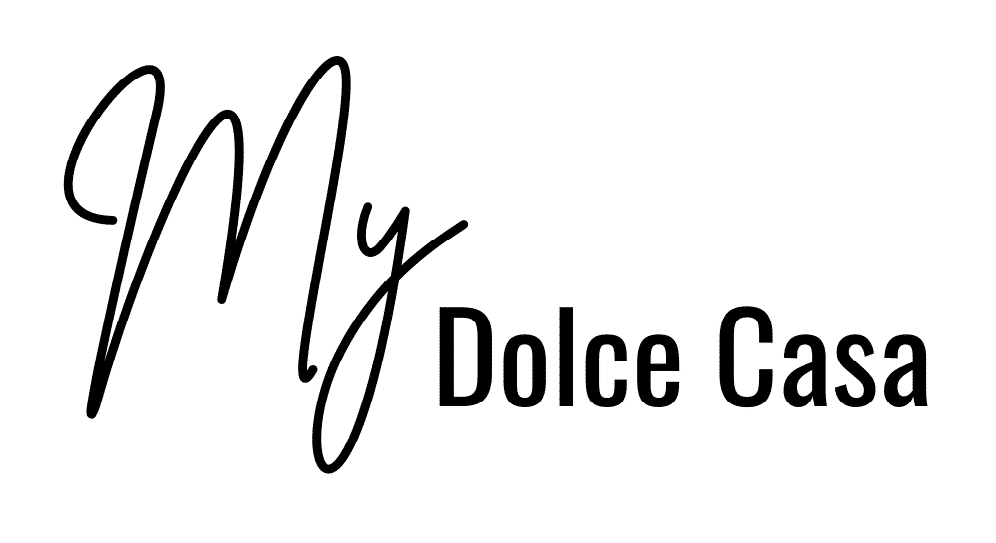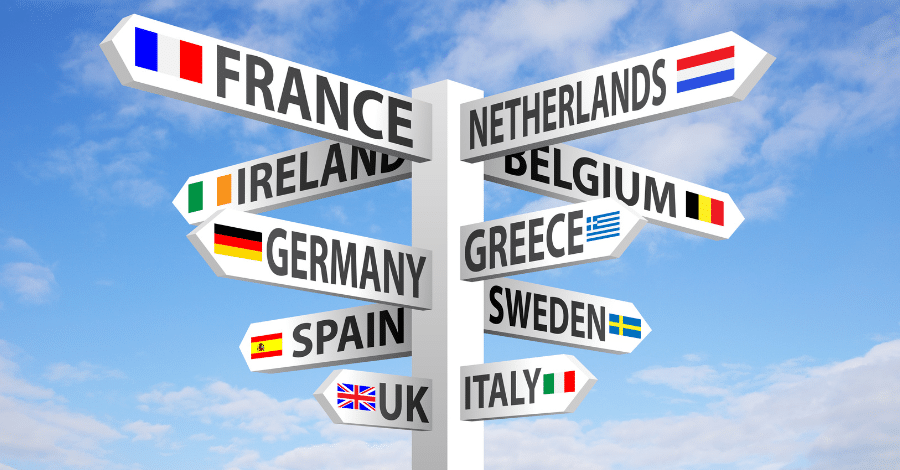The “Schengen Shuffle” refers to a practice used by some travelers to navigate the visa restrictions in the Schengen Area of Europe. The Schengen Area is a zone comprising several European countries that have abolished passport and all other types of border control at their mutual borders.
For many non-European Union (EU) nationals, this means they can travel within the Schengen Area for short stays without needing a visa.
Visa Requirements for the Schengen Area
Non-EU nationals from countries that have visa-free agreements with the Schengen Area, such as Americans, Canadians, and Australians, can enter and travel within the zone without a visa for short stays of up to 90 days within a 180-day period.

If the traveler wishes to stay longer, they must obtain a long-stay visa or a residency permit, which are subject to more stringent requirements and are granted by individual Schengen countries based on their national laws.
Planning a permanent move to Europe? Check out the complete guides to obtaining residency in Italy, France, Spain, Greece or Portugal.
Why People Do the Schengen Shuffle
The Schengen Shuffle is used by travelers who want to stay in Europe for longer than the allowed 90 days in 180 days but do not qualify for or do not wish to apply for a long-stay visa or residency permit.
For example, by leaving the Schengen Area after their 90-day stay and going to a non-Schengen country (like the UK, Ireland, or countries in Eastern Europe, North Africa, etc.), they can stay outside the Schengen zone for another 90 days. After this period, they can re-enter the Schengen Area for another 90-day stay.
The exact number of days one needs to spend outside of the Schengen Area before returning to a Schengen country varies from case to case, so it’s best to use a visa calculator to figure out the correct period of time.

Risks and Limitations of the Schengen Shuffle
This practice is not illegal, but it can be risky as border control officers have the discretion to deny entry if they suspect that the traveler is trying to live in the Schengen Area without proper residency rights. Frequent entries and exits may raise suspicions and lead to more scrutiny or even a denial of entry.
It’s important to note that the rules may vary depending on the traveler’s nationality and specific agreements their country has with the Schengen Area.
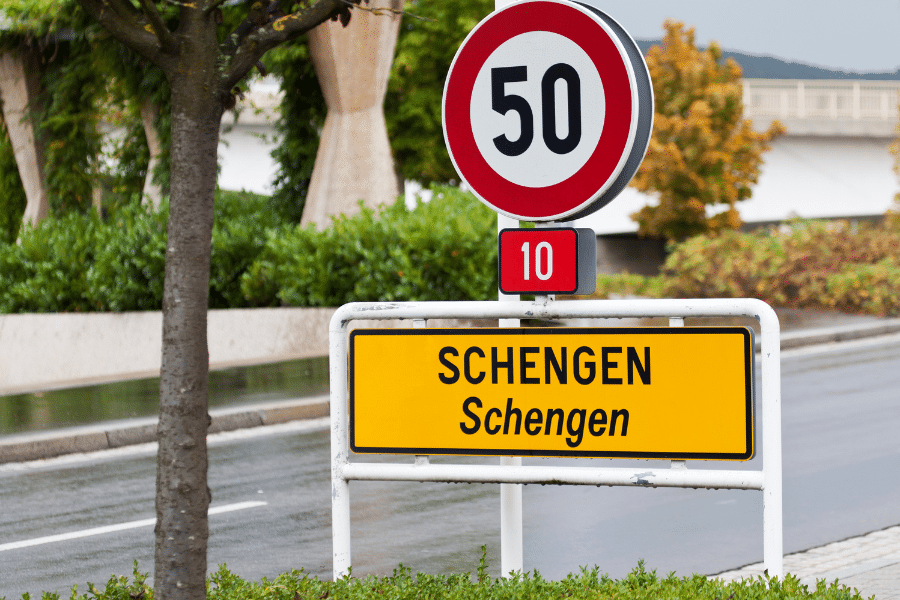
Changes That Might Affect the Practice
The implementation of the European Travel Information and Authorization System (ETIAS) makes it mandatory for visa-exempt non-EU nationals to obtain an authorization before traveling to the Schengen Area. This system keeps track of entries and exits, potentially impacting the feasibility of the Schengen Shuffle.
Moreover, the list of Schengen countries expands from time to time, as more E.U. countries reach agreements to join the free-movement zone. For example, Romania and Bulgaria used to be great locations for the Schengen shuffle, but they are soon joining the Schengen area.
What Are the Best Countries to Do the Schengen Shuffle?
Expats from the United States, Canada or Australia who are in Europe on a short-stay visa may find it impractical and costly to return to their home countries due to the long distance and high travel costs. Instead, many prefer to find more affordable countries nearby that they can visit and experience while resetting their 90-day Schengen visa clock.
In fact, it’s not just a practical matter, it is also an experience that many take advantage of to discover other countries and cultures near the Schengen borders.
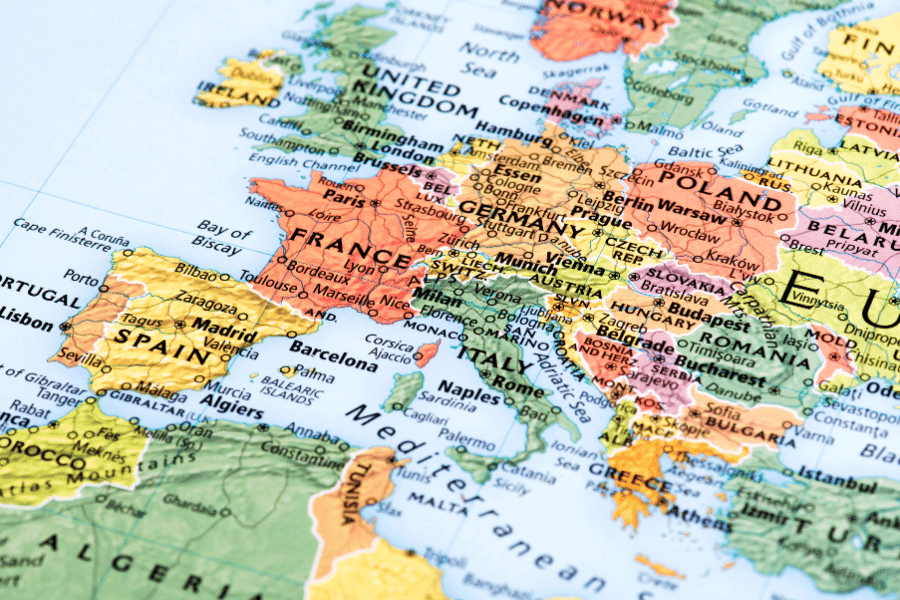
First, there are several countries in Europe that are not part of the Schengen Zone and are great options for visiting or living in temporarily. These include the United Kingdom, Ireland, Albania, Montenegro, North Macedonia, Bosnia and Herzegovina, Serbia, and Moldova.
Additionally, some venture further south to northern Africa, into Morroco, Tunisia or Egypt or further east into Turkey for low-cost, interesting travel experiences.
Although there are enough options to go around, some of these countries can be very costly to live in for weeks or months at a time, so more affordable places are often preferred. One great piece of advice before choosing a country outside of Schengen is to look for places with cheap direct flights from your location.
Here are the expats’ favorite countries for the Schengen shuffle:
1. Albania
Albania is a great location easily reacheable from Italy, Croatia, and Greece by air, ferry, or car, and from most other Schengen area countries by direct flights to the capital of Tirana.
Albania has similar values, culture, and lifestyle to other Central and Eastern European countries, but at a very low cost of living. Expenses like food, accommodation, and transport are relatively affordable, making it a budget-friendly destination for visiting or long-term moves.

Travel costs in Albania are generally low, with affordable options for accommodation, dining, and internal transportation. It’s a great destination for travelers looking for a mix of culture, history, and natural beauty on a budget.
Here’s what one expat from Italy says about Albania:
“Albania has a low cost of living, friendly people and amazing food quality! […] We stayed in Sarande for 1 month. Take a Ryanair flight to Corfu Greece and spend a few days there before taking a 30 minute ferry over to Sarande.”
2. Montenegro
With cheap and short flights from many major European cities, including Rome, Naples, Madrid, Paris, or Barcelona, Montenegro offers a lot of natural beauty at a moderate cost of living. While it is more expensive than Albania, it is still cheaper than many Western European countries.

Coastal areas can be pricier, especially during the tourist season. Traveling to Montenegro during the summer season is typically more expensive. Budget travelers can find affordable options, but costs in popular tourist spots like Kotor and Budva will be higher.
Here’s what one expat from Spain says about Montenegro:
“Montenegro is a small and friendly country where you’ll find cheap and delicious food, magnificent mountains to explore and a cute little seaside for the summer months.”
3. Cyprus
Cyprus has a higher cost of living compared to many Balkan and North African countries, but it’s generally lower than most countries in the Schengen region. Expenses in urban areas like Nicosia, Larnaca or Limassol are higher than in rural areas.

Cyprus, as a popular tourist destination, offers a range of travel expenses. While it can be pricey during peak seasons, especially in resort areas, there are options for budget travelers, particularly in the off-season.
The two main advantages of visiting Cyprus are the weather and the prevalence of spoken English. The island is a favorite retirement and vacation destination for British citizens.
Here’s what one expat from Italy says about Cyprus:
“When the 3 months out occurred during the winter I sought out mild sunny Cyprus […] During the winter there I capitalized on off-season pricing for accommodation. Walking and hiking in Cyprus in particular was awesome in January and February, sunny and 18 Celsius on average.”
4. Morocco
Morocco is a popular Schengen-shuffle go-to country in northern Africa expecially for people on a short-stay visa in Spain and Portugal. The country is known for its colorful culture, amazing cuisine and low cost of living. Essentials like food, housing, and transportation are quite affordable, though prices can be higher in major cities like Casablanca and Marrakech.

Traveling in Morocco can be very cost-effective, with budget-friendly options for accommodations, food, and transportation. You can find monthly accomodation for anywhere between $50 – $1,000 per month, and it is especially cheap if you have a roommate or choose a more remote location. Towns and villages in the dessert are very affordable, not to mention absolutely gorgeous.
Here’s what one expat from Spain says about Morocco:
“Morocco is extremely affordable. You can rent a pretty sweet place for 500 to 1000 usd per month. I lived in marrakech with a roommate and paid 300 per month. Food and everything else is cheap too.”
5. Egypt
For an out-of-Schengen destination that feels like a beach vacation, Egypt is a great place to go. It generally has a low cost of living, with basic expenses such as food, rent, and transportation being quite affordable, particularly outside of major cities like Cairo.
You’ll encounter a range of travel costs in Egypt, with plenty of budget-friendly options for accommodation and food. High-end seaside resort towns are more expensive, but overall, Egypt is considered a budget-friendly travel destination.
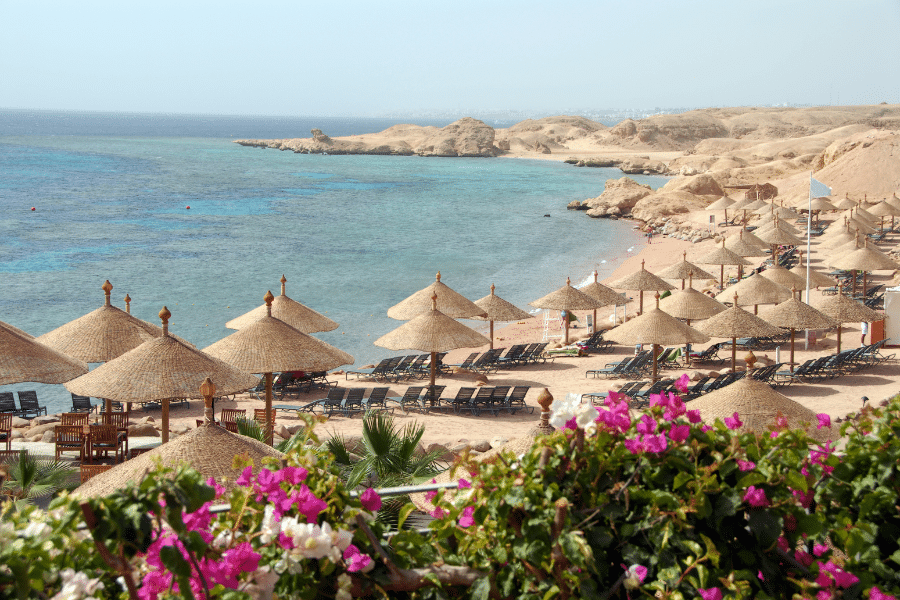
However, be aware of the cultural differences and religious norms in Egypt, as they are an important part of the everyday life in Egypt and expected to be respected by everyone, including visitors.
Here’s what one expat from France says about Egypt:
“We go to Sharm Egypt every winter for 1-2 months, nice weather and nice beach.”
